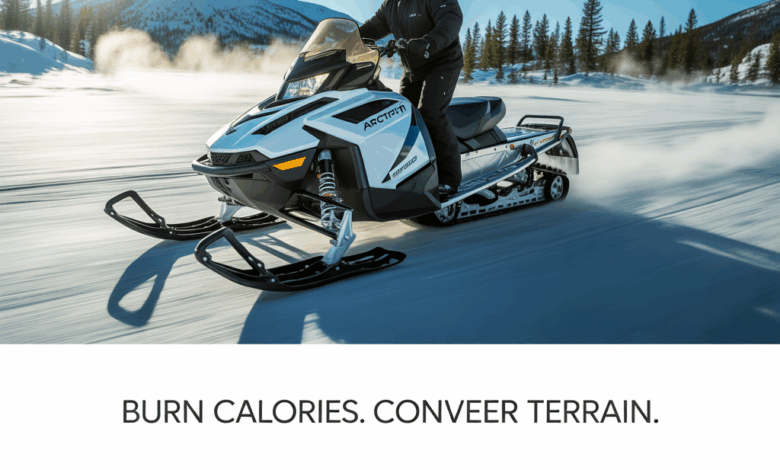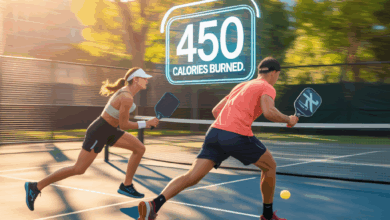How Many Calories Do You Burn Snowmobiling

Ever hopped off a snowmobile after a long ride and wondered whether the adrenaline, cold, and all that cranky steering actually counted as exercise? Imagine a crisp winter morning, engine warming, and you’re carving through powder — are you burning a few hundred calories or just warming your hands? If you’ve ever asked, “how many calories do you burn snowmobiling,” you’re in the right place.
Quick Answer: Calories Burned Snowmobiling (In One Line)
On average, snowmobiling burns roughly 200–600 calories per hour depending on intensity, body weight, and riding style — from relaxed trail riding to intense backcountry maneuvering.
Why the Wide Range? What Affects Calorie Burn
Calories burned while snowmobiling vary because the activity ranges from passive (sitting on groomed trails) to highly active (standing, balancing, negotiating deep snow and steep terrain). Key factors include:
- Intensity: Casual trail rides are lower intensity; technical backcountry riding is higher.
- Riding posture: Standing and using your legs and core increases exertion.
- Body weight: Heavier riders burn more calories for the same activity.
- Duration: Longer rides accumulate more total calories.
- Cold and wind: Thermoregulation uses extra energy in very cold weather.
How Many Calories Do You Burn Snowmobiling? Examples & Calculations
We can estimate calorie burn using METs (metabolic equivalents). Rough MET values for snowmobiling range from 3 to 7 depending on activity level. Use this simple formula: Calories/hour = MET × body weight (kg).
Estimated calorie burn — real examples
- Casual trail riding (MET ~3–4): A 150 lb (68 kg) rider: ~200–270 kcal/hour. A 200 lb (91 kg) rider: ~270–360 kcal/hour.
- Active riding, mixed terrain (MET ~4–5.5): 150 lb rider: ~270–375 kcal/hour. 200 lb rider: ~360–500 kcal/hour.
- Intense backcountry/standing riding (MET ~6–7): 150 lb rider: ~408–476 kcal/hour. 200 lb rider: ~546–637 kcal/hour.
These are estimates — your actual calories burned can be higher if you’re pushing the sled, digging out snow, or hiking to reach a trailhead.
Breaking It Down: Trail Ride vs Backcountry Adventure
Trail riding (lower-intensity)
Riding groomed trails, seated, with occasional steering adjustments — this is more of a recreational activity. Expect moderate calorie burn and a good time, but not the same conditioning effect as a vigorous workout.
Backcountry or aggressive riding (higher-intensity)
Standing for long periods, shifting weight, absorbing bumps, and physically reclaiming stuck machines all engage the core, legs, and upper body. This can turn a snowmobile outing into a solid calorie-burning session — close to a cardio-strength hybrid workout.
Practical Fitness Tips to Maximize Calorie Burn and Reduce Injury
If you want to make snowmobiling more of a workout (or just ride longer and feel better), try these strategies:
- Warm up: 5–10 minutes of dynamic movements (leg swings, arm circles, bodyweight squats) before the engine starts.
- Stand more often: Use a standing posture when navigating rough terrain — this engages quads, glutes, and core.
- Engage core throughout: Bracing your core when cornering improves control and increases energy expenditure.
- Interval riding: Alternate aggressive bursts (technical sections) with slower cruising to spike heart rate and boost calorie burn.
- Strength training: Off-season focus on squats, lunges, deadlifts, and anti-rotation core work to improve endurance and reduce fatigue.
- Hydration & fueling: Cold weather masks thirst; drink water and bring carbohydrate snacks for sustained energy.
- Layer smart: Avoid overheating — moisture-wicking layers help regulate body temperature so you don’t waste energy fighting chill or sweat.
Snowmobiling Workout Variations to Add Fitness Value
Want to turn your passion into training? Try these targeted routines.
Pre-ride Activation Circuit (10–15 minutes)
- Bodyweight squats — 2 sets of 15
- Lateral lunges — 2 sets of 10 each side
- Plank variations — 3 x 30–45 seconds
- Single-leg balance with light reach — 2 x 10 each leg
Off-season Strength Plan (twice per week)
- Back squat or goblet squat — 3 sets of 6–10
- Romanian deadlift — 3 sets of 8–12
- Single-arm farmer carry — 3 x 40–60 seconds
- Anti-rotation cable or band chops — 3 x 10 each side
Nutrition & Recovery Tips for Active Riders
- Eat a balanced mix of carbs and protein before rides — think oats with nut butter or a whole-grain sandwich.
- Pack portable energy: trail mix, bananas, or energy bars for long rides.
- Post-ride recovery: 20–30g protein and some carbs within 60 minutes to aid muscle repair and glycogen replenishment.
- Sleep matters — aim for consistent, quality rest to maximize performance and calorie burn on subsequent days.
Real-World Examples: What Riders Report
Weekend trail riders often estimate burning 200–300 calories per hour — a pleasant complement to skiing or snowshoeing. Backcountry enthusiasts who spend hours standing, digging, or hiking report totals closer to 400–800 calories per hour during intense segments, especially when accounting for shoveling and sled recovery.
Frequently Asked Questions
Yes — especially when riding aggressively or standing for long periods. It elevates heart rate and can be a moderate-intensity cardio session, particularly if you use interval-style bursts.
Stand more, ride more technical terrain, incorporate short high-effort bursts, and do strength training that improves your ability to generate power and control on the sled.
Generally yes. Better strength, balance, and endurance reduce fatigue and improve reaction time, which lowers injury risk. Off-season conditioning and mobility work pay dividends on long rides.
Conclusion — So, How Many Calories Do You Burn Snowmobiling?
In short: how many calories do you burn snowmobiling depends on the ride. Expect approximately 200–600 calories per hour for most riders, with higher numbers possible in intense backcountry conditions. To get the most from every outing, pair smart riding techniques with off-snow strength work and proper nutrition. Ready to turn your snowmobile days into a fitness advantage? Start with a simple warm-up, stand more during technical sections, and try the strength routines above.
Want more targeted training to improve your riding endurance and calorie burn? Check out our workout routines, browse practical nutrition guides, or read seasonal wellness tips to stay healthy on and off the trail. Tag your next snowmobile session with intention — and ride safe.
Call to action: Try the Pre-ride Activation Circuit before your next outing and note how you feel — more stable, less sore, and likely burning more calories. Share your experience in the comments or follow our guides to level up your winter fitness.





